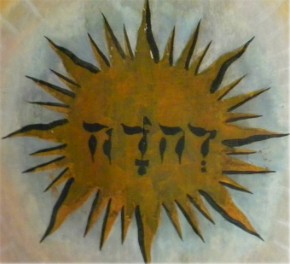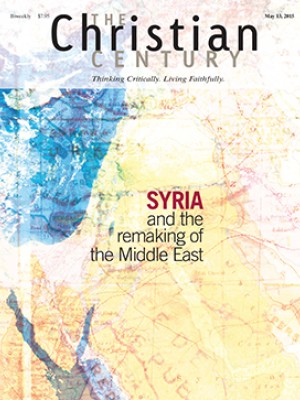God in ordinary words: How the Bible speaks of the divine

The category of “relation” has long been central to trinitarian theology, but in recent theology it has become a transcendental category, the leading feature not only of divine life but also of created life. Human beings made in the image of the triune God are analogically “relational” beings, and relationality is said to characterize the nonhuman world as well.
However, critics of this approach—Kathryn Tanner and Lewis Ayres stand out for their clarity—argue that since God and humans are different, the move from talk of God’s relationality to human relationships is not straightforward. Because of the gap between God and human beings, ordinary language does not apply to God in the same way it does to humans. What does equal mean in the statement “divine persons are equal”? What does person or relation mean when applied to God? Divine persons are their relations, but human beings exist, Tanner says, before the relations they have among themselves. Further, divine persons have a fixed relationality that is not characteristic of human beings: the Father is no one’s Son, and the Son will never be a Father.
Read our latest issue or browse back issues.
Ayres likewise objects that attempts at trinitarian ontology are unclear about their concept of analogy. A proper concept of analogy must both honor the Creator-creature distinction and recognize the presence of God within his creation. Because of the differences between God and humans, terms like relation cannot be used univocally when applied to one or the other.
Ayres is also concerned that relational ontologies bypass the classical emphasis on contemplative purification, involving both meditation on scripture, with attention to its unfolding revelation, and participation in the life of the church. Relational ontologies too often treat trinitarian patterns of life as if they were blueprints that could be grasped by just anyone and applied to some human grouping.
I should note that both Tanner and Ayres believe that trinitarian theology, properly understood and used, does provide resources for understanding creation and human relationality. Tanner’s concern is largely to emphasize God’s initiative in restoring human relations. Humans do not imitate but participate in the divine communion. Thus she highlights the mission of the Son and Spirit. The relations of the divine persons in the economy of redemption affect human relations: ‘‘A life empowered by the Spirit in service to the mission of the Father for the world means that Jesus is with and for us, and that we, in turn, are to be with and for one another.” Thus the mission does bring in a “new community” whose “way of being is what the Trinitarian relations as they show themselves in the economy . . . amount to in human relational terms.”
Having made proper qualifications, Ayres too concludes that “the divine relationships certainly should provide material that should be of immense help in shaping our vision of the world” and can “serve as a guide for our engagement of ontological thought.” Created things do reflect God, but we see that reflection rightly when “the grasping is part of our move towards the Creator.”
Still there are substantive problems with Tanner’s and Ayres’s objections. Specifically, Tanner fails to reckon with the import of the most important biblical passages. She cites Jesus’ prayer that “they may be one as we are one” (John 17:11, 22) but concludes that this may only indicate “the centrality of Christ, and of his relations with the Father, for our relations with the Father.” She ignores the critical text (v. 21), where Jesus asks the Father with whom he is one by mutual indwelling that the disciples might be one “just as” (kathos) “you, Father, are in me and I in you.”
Tanner is correct to stress that the image of divine life among the disciples utterly depends on the missions of the Son and Spirit, by which the disciples share in the communion of Father, Son, and Spirit, and she is also correct to stress that the interpersonal relations expressed in the mission come, by the power of the Spirit, to characterize the life of believers. But she weakens Jesus’ prayer concerning the result of this mission: that the common life of the disciples would come to bear the imprint of the eternal perichoretic relation of the Father and Son.
The more general problem with both Tanner and Ayres, and with many of their allies, lies in their implied notions of the Creator-creature distinction and of analogy. The objections arise, I submit, from a faulty doctrine of creation.
Scripture uses many words and names to portray God, his character, and his actions. Many of the descriptions of God are applications of created terms to God: God is Rock, Light, Sun, Shield, and so on. He stands in relation to humanity and Israel in ways describable in terms of human relations: he is King, Father, Lord, Husband.
Though the words must be taken in an analogical sense, scripture exhibits no anxiety about using them. Nowhere in scripture is there any hint that such analogies and figures are incapable of telling the truth about God, nor do we find any hint of the gymnastics typical of theological discussions of analogy (e.g., the common claim that God is infinitely dissimilar to whatever we compare him to). Scripture claims that many of these terms are God’s own self-descriptions (e.g., Gen. 15:1), and naively supposes that human language can accurately reveal God.
The import of these descriptions seems straightforward: God is rocklike and shieldlike, kinglike and fatherlike in some unspecified but meaningful way. How he is such is left to context and narrative. “As a father has compassion on his children, so the Lord has compassion for those who fear him” (Ps. 103:13). More mysteriously, he is the Rock that begot Israel (Deut. 32).
How it is that scripture is so very unconcerned about the problems that have preoccupied theologians for many centuries? I suggest that the Bible is unself-conscious about its language because of the assumed view of creation and human nature, and therefore of human language.
All created things were made by God, designed after his Wisdom and Logos. As such, creation is communication from God about God (Ps. 19). God made rocks, and in making them (we may surmise) intended them to display at least some radiance of his glory. God created human beings in his image, and in so doing designed them to be suitable icons of his character. God oversaw the formation of human families and polities, and as he did so, he directed them so that “fathers” and “kings” depict in various ways how Yahweh relates to his creation, to human beings, and to his people in particular. Ultimately, he designed the world so that fathers and sons would point toward the eternal Father who loves his eternal Son. God created everything to communicate of himself and providentially directs creation to the same end.
If that is what created things are, and if God is the Creator who knows and governs his universe, then created things are designed to speak of him. There is no impropriety in calling God Rock, Sun, Father, or in suggesting that there are analogies between father-son relations and the eternal relation of the Father and Son. There would seem to be no obstacle to extending these analogies, provided we recognize when we leave behind definite statements of scripture and begin to speculate.
Scripture also assumes that God is capable of human speech. Because God has designed creation and humanity and ordinary human language to communicate about him, he can speak clearly in ordinary human language about himself. God has revealed himself in human language, that human language has been preserved in the Bible, and it is ordinary human language. Therefore, ordinary human language is adequate for communicating the reality of God to us.
There is mystery at every point, but why should we expect anything else? We want to talk about, and to, an infinite, incomprehensible God.
The biblical analogies must be handled with care, of course. We must not conclude that because we grasp something of how human beings relate, we know exactly what sort of relation the Father has with the Son. But we should be no more anxious about these analogies than scripture is, and we should certainly not be so anxious about the limits of human knowledge and speech that we are reduced to silence. We worship a God who is Word; he has spoken, and he expects us to speak his words after him. He expects us to learn how to use everything he has revealed and named to honor, praise, and tell of him, because that is the destiny for which everything was created.
This article is adapted from Traces of the Trinity: Signs of God in Creation and Human Experience, by Peter J. Leithart, just published by Brazos Press, a division of Baker Publishing Group. © 2015. Used by permission.






